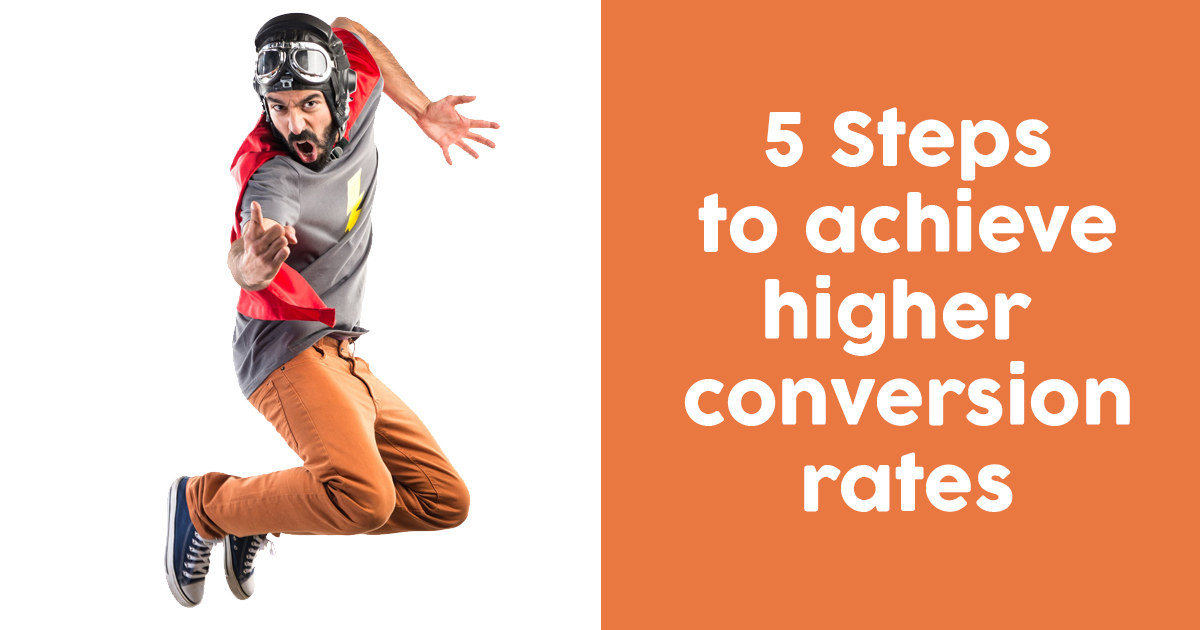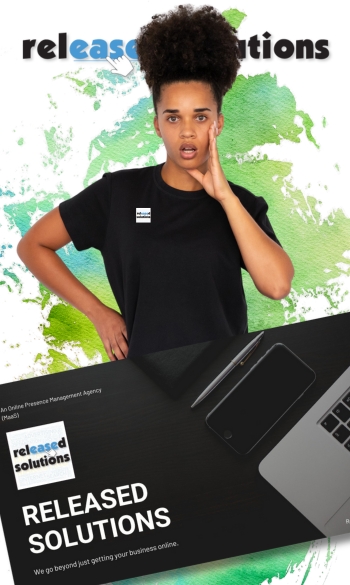
Conversion Rates Improved In 5 Steps
Our social media strategy has 5 phases. Each phase requires at least 30 days of deployment and data measuring to ensure the goals we are trying to achieve are being reached. During the 30 day period there needs to be at less 20 - 31 posts generated. Any paid campaigns that may run during this time should be measured separately to avoid confusion of inflated or unrealistic organic results.
The5 phase strategy includes the following objectives:
- Increase Reach
- Increase Engagement
- Target Engagers
- Obtained Site Visits from Engagers
- Convert the Site Visitors
Results vary from industry to industry and product to product. What does remain to be a constant is there rarely is a shortcut to starting up a social media conversion strategy. The audience of people targeted is the largest unknown variable in the equation formula of conversion. If the various campaigns reach the wrong people, or the wrong message gets delivered the multiple phases will fail at various points throughout the managed service periods.
The second point of failure is the business owner. Many entrepreneurial individuals are strong, self-motivated, do it yourself type of people. This type of person is the most difficult to manage. Added to the challenge is the fact many small business owners have tried their hand at social media marketing and have received mixed results. It is the mixture of results that makes coaching an entrepreneur to make a radical change from what they believe will work or will not work. A client seeking managed service support with their Online Presence must have patience, good listening skills, trust and be prepared to execute all 5 phases over the course of 6 months.
Results don’t necessarily take 6 months to appear. If your product or service is desperately needed in the marketplace, conversions can happen as early as Phase 1. In fact Paid campaigns, on any social network, drive marketing results faster by allowing for all 5 Phases to deploy at the same time. It often works best to give a campaign at least 45 days to circulate the message several times to a targeted group of people before anticipating results.
Okay, enough preaching… let’s take a closer look at each phase. It is important to get an understanding of what each phase is supposed to accomplish:
Increase Reach
Phase 1 of most social media strategist involves some type of plan to increase reach. Business owners are at various start points in this phase. Some business pages have fans, and some are just starting out. If you don’t have any followers (fans), then a paid campaign will be the best approach for your business. If you have less than 100 subscribers, you too should consider running a 45-day marketing campaign to build your subscriber base. Business pages with 100 and more followers should review their current reach metrics. Under each post, on Facebook, you should see a progress bar with a number:

This progress bar will provide you with insight as to how many subscribers your posts are reaching. Other social channels have similar measurement tools, and each should be reviewed to help establish a benchmark start point.
How to increase reach
If you do nothing, you get nothing because zero multiplied by any number is zero. Notice I suggest that strategy of social media utilizes a multiplier factor. This is the behavior we have identified in social channels therefore if your current subscribers are not being reached you must reach outside your fans by joining groups, sending direct messages, displaying content on your website and sharing content into pages and timelines of supporting influencers.
A content campaign must be developed. The content campaign in Phase 1 should be 97% informative content that avoids direct advertising messaging. Therefore a 30 to 1 ratio should be deployed whereas 30 pieces of content are informative and 1 piece of content can be advertisement based. If your business can't keep up with generating at least 5 posts a day, seek a digital media content management service.
Increase Engagement
Phase 2 addresses increasing engagement. This is a difficult phase for many businesses because this phase requires a large amount of reviewing insight metrics provided by the various social channels. If Phase 1 is doing well, there is a strong possibility your content is generating engagement. To be clear let’s first make sure everyone reading this blog post understands what we define as engagement:
- Like
- Comment
- Click
- Share
- Stare
The first 4 engagement types are easy to measure because most social media channels collect this information and provide media channel owners with visual stats. The “Stare” metrics is not something we see in many of the metrics other than video content which uses the watch metrics. Despite the absence of the metrics, the “Stare” metrics are real as many social channels are measuring how long a subscriber spends looking at a piece of content. No, the social networks are not turning on your webcam and looking at you looking at the page (or are they?). The social channels in all cases are calculating in real time page position of content to help them better determine what you are looking at and for how long. This metrics helps the algorithm determine what content should be fed to the subscriber in the next few scrolls.
How to increase reach
If it were as easy as telling a subscriber, click like, click the link, share with others, comment below then everyone would see high engagement by adding these call to action labels in their graphics or post text. Unfortunately, subscribers have become numb to the variety of direct calls for engagement. In fact, in our review, we see a decline in engagement when we ask for it directly. However when we :
- Add A Message Button
- Use HashTags that your customers follow
- Provide Entertaining yet simple graphics
- Include mentions and hashtags within the post text
- Make a statement the triggers engagement
- Target a specific audience for the post (Facebook only at this time)
- Ask a question that can be answered with a simple Yes or No response.
These above strategies increase engagement and reach of a post. If you need support with implementing these strategies checkout our digital media support services.
Target Engagers
Phase 1 and 2 should occur between 30 - 90 days. If you have not seen increases in at least Phase 1 in the first 60 days, you need to rethink your marketing plan before moving on to phase 3. In Phase 3 you need to have the engagement to target engagers. For this conversation and phase, we will look at in-channel engagement and off-channel engagement (i.e., Website Visitors). Most social media channels keep metrics on which subscribers are engaging with your content. Facebook, for example, enables a business owner to build a custom audience of people that have engaged with your content. With this type of functionality, you can easily target in-channel content engagers. All of the major social networks provide tracking pixels that can be installed on a website. If part of your social media content drives subscribers off-channel into your website, you must have a tracking pixel installed to capitalize on this type of engager.
How to target an engager
I think we all agree on the importance of phase 1 and 2 as without these two phases phase 3 is almost impossible to some degree. Tracking engagement in-channel (within the social media network) will always be found in the business section of most channels under the audience builder sections. Facebook, for example, has a section that will enable you to build a custom audience based on website traffic, content engagement and even a customer file.
To target an engager you will need to use paid promotional campaigns on each network - (this we will cover in Phase 4). The bonus is if you have structured your content-post to a specific theme then your paid ad campaigns will do much better than average. If you leap out with a campaign that is based on conversion without nurturing phase 1 and 2 your campaign will more than likely perform below average. The average conversion rate is around 4%. Start building audience types in Phase 3. If you don’t know how to build a social media audience, seek the help of a qualified social media consultant.
Hint / Tip:
Install a tracking pixel for every single social channel on your website site. If you don’t know how to do it, get help with installing social media tracking pixels. Without the pixels in place, on your website, you won’t have the data you need to target an audience of site visitors.
Obtain Site Visits from Engagers
Most social channels provide many marketing objectives you can use for each campaign. The most popular marketing objectives are the ones that drive conversion and website visits. Phase 4 suggests running campaigns at your targeted audience of engagers for the sole purpose of driving website visits. You need at least a few hundred people within an audience to start a decent campaign. The target audience can come from multiple sources:
- Engagers
- Customer files
- Previous website visitors
- Current subscribers of your social channel
How to obtain site visits from engagers
To drive a subscriber off-channel using a paid campaign your offer must be compelling and of interest to the social media subscriber. Phases 1 through 3 are critical to the overall success of driving traffic (Phase 4). As with traditional advertising methods, digital marketing strategies should have a great offer, a limited time notice, a frequency or retouch rate of at least 8 times in your plan and money. Without these basic elements, your campaign will struggle to generate click-throughs. The average click-through rate is around 4%. Again, it is easy to fall below this average if your audience is not carefully selected. Every campaign should be reviewed and monitored on a daily basis. Do not make the mistake of launching a campaign and returning 30 days later to see how it did. A digital campaign, unlike traditional media campaigns, can be adjusted minute by minute if that was your desire. We recommend reviewing a campaign at least every 24 hours to ensure that the click-through rate is performing, at a minimum, the average of 4%. Most don’t have time to do this. Therefore, you should consider hiring a digital ad campaign manager to oversee the progress of your campaign.
Convert the site visitors
At this phase, you should have completed phases 1 through 4 without fail. We recommend having at least tried and tested phases 1 through 3 several times over the course of 90 days before jumping into phases 4 and 5. In phase 5 which goes hand in hand with phase 4, you should focus on getting conversions. Not everyone that clicks through to visit your website will convert. In fact, we estimate conservatively that your conversion rate may only achieve 4%. This conservative estimation helps many businesses formulate their advertising budgets. If a 4% conversion rate does not generate an acceptable ROI (return on investment), you must determine what rate of success is acceptable and then ensure you measure and monitor your campaigns to achieve that rate of return. If your campaigns are not reaching your minimum conversion rate requirement adjustments must be made up to and including terminating the campaign.
How to convert site visitors
Hire us. No, that’s not the only answer. The reality is if phases 1 through 4 were done correctly then the conversion will happen naturally at a better rate of performance than the average. Of course, if your conversion rate requirement is higher than the average you will need to carefully monitor progress. It is in the monitoring of conversions where you can truly achieve higher conversion rates. How so? If you recall, and if you are still reading, in phase 3 I mentioned that pixels are powerful little tracking tools that must be installed on every website. We even offered help with installing your pixel if you need this type of online presence support. Tracking visits are only one basic function of pixels. The ability to track conversion is also a functionality trait of pixels. If we can track conversions, this means we can also track non-conversions from site visitors. Knowing who did not convert provides your business with an opportunity to retarget this site visitor (if at first, you don’t succeed, try again). Running a campaign solely dedicated to site visitors that did not convert is a must do in every marketing campaign. You have the ability, in a retargeting / remarketing campaign, to sweeten the offer, apply more deadline time pressure, and to reclaim your investment from the initial click through that generated no results from this visitor the first time.
A few cosmetic points you need to keep in mind:
- Design the landing page for mobile visitors. The Click through rate of mobile is 10 to 1 of that from desktop visitors.
- Display countdown timers plus a running total of the number of purchases (borrow from the QVC TV approach).
- Be upfront and clear on the pricing and details of the offer (anything left to question will result in the visitor not converting).
- Provide price comparisons to other products and services you or the competitors may offer when applicable.
- Offer free trials if possible, or money back guarantees.
- Use video to help improve the conversion rate. People love to hear what you have to say versus read a ton of detail (like are you still actually reading this?)
- Hire an expert to build the landing pages. Nothing turns people off quicker than an unprofessional looking page.
Conclusion
This 5 Phase approach does work. Patience is a requirement. If you are looking to get predictable conversion results, you must nurture the audience. Be prepared to do a large number of testing campaigns. Be in a position to make adjustments and measure constantly. If you need any help, coaching or just want someone else to do then call us for your online presence management support.
Watch this video.... in the video below we show the how-to steps of many of the tasks described in this blog post.

